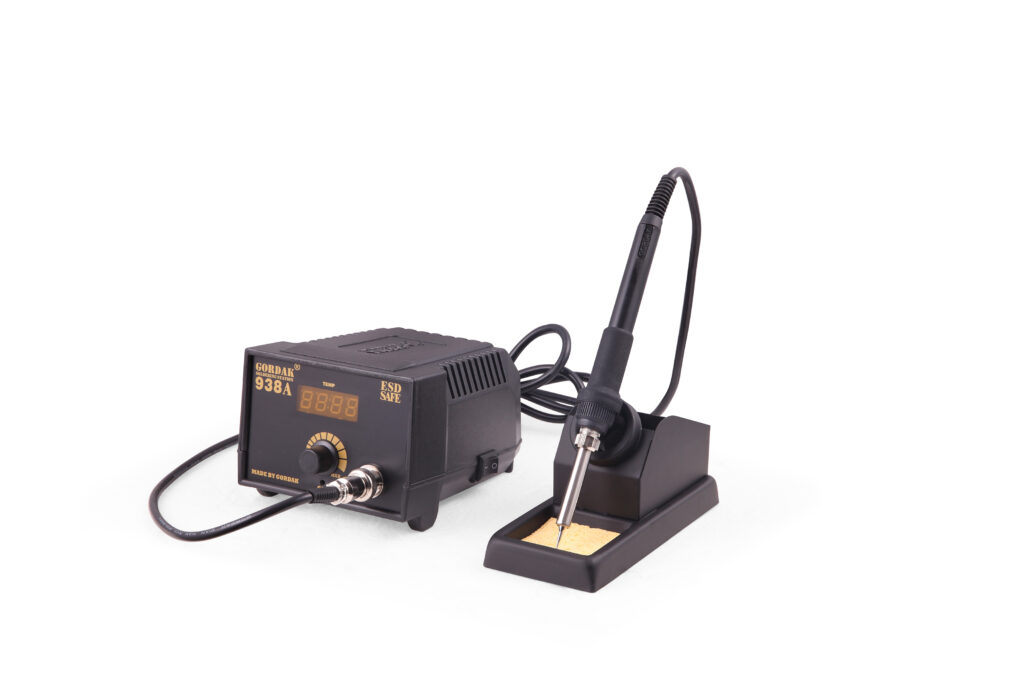Precision soldering tools are essential for achieving high-quality solder joints in electronics assembly and repair. Whether you are a seasoned professional or a beginner, mastering the use of these tools can significantly improve your efficiency and the quality of your work. Here are some top tips for using precision soldering tools effectively.

1. Choose the Right Soldering Iron and Tips
Selecting the appropriate soldering iron and tips is crucial for precision work. Here’s what to consider:
- Soldering Iron: Choose a soldering iron with adjustable temperature settings and a comfortable grip. For precision work, a soldering station with digital temperature control is ideal.
- Soldering Tips: Use fine-point tips for small components and delicate work. Chisel tips are suitable for larger joints. Ensure the tips are clean and well-maintained for optimal performance.
2. Set the Correct Temperature
Using the correct temperature is vital for achieving strong and reliable solder joints. Here are some guidelines:
- Low-Temperature Soldering (200-300°C): Ideal for small, delicate components and sensitive PCBs.
- Medium-Temperature Soldering (300-400°C): Suitable for most general-purpose soldering tasks.
- High-Temperature Soldering (400-500°C): Necessary for larger components and high-thermal-mass joints.
3. Pre-Tin the Soldering Tip
Pre-tinning the soldering tip helps improve heat transfer and ensures a cleaner solder joint. Follow these steps:
- Heat the soldering iron to the desired temperature.
- Apply a small amount of solder to the tip.
- Wipe off excess solder with a damp sponge or brass wool.
4. Use Quality Solder and Flux
High-quality solder and flux are essential for reliable solder joints. Consider the following:
- Solder: Use lead-free solder for a safer working environment. Look for solder with a rosin core for better flow and adhesion.
- Flux: Apply flux to the surfaces to be soldered. It helps remove oxidation and improves the wetting of the solder.
5. Apply Heat Efficiently
Efficient heat application is crucial for precision soldering. Here’s how to do it:
- Position the Tip Correctly: Place the soldering tip on the joint so that it touches both the component lead and the PCB pad.
- Heat the Joint: Allow the joint to heat up for a few seconds before applying solder. This ensures proper heat transfer.
- Apply Solder: Feed the solder into the joint, not directly onto the soldering iron tip. Remove the soldering iron once the solder flows smoothly.
6. Avoid Excessive Heat and Overheating
Overheating can damage components and PCBs. Here’s how to avoid it:
- Use the Right Temperature: Set the soldering iron to the appropriate temperature for the task.
- Limit Contact Time: Minimize the time the soldering iron is in contact with the joint. A few seconds should be sufficient.
- Use Heat Sinks: For sensitive components, use heat sinks or alligator clips to dissipate excess heat.
7. Clean and Maintain Your Tools
Regular maintenance of your soldering tools ensures their longevity and performance. Follow these tips:
- Clean the Tips: Use a damp sponge or brass wool to clean the soldering tips during and after use.
- Replace Worn Tips: Replace soldering tips that are worn out or damaged.
- Check Connections: Ensure all connections in your soldering station are secure and functioning properly.
8. Practice Proper Soldering Techniques
Developing good soldering techniques is essential for precision work. Here are some best practices:
- Use the Right Amount of Solder: Avoid using too much solder, as it can create unwanted bridges and blobs. Use just enough to form a smooth, shiny joint.
- Ensure Proper Joint Formation: A good solder joint should be smooth, shiny, and have a concave shape. It should cover the joint evenly without any gaps.
- Inspect Your Work: After soldering, inspect your work with a magnifying glass or microscope to ensure there are no cold joints, bridges, or other defects.
9. Work in a Safe Environment
Safety is paramount when working with soldering tools. Keep these safety tips in mind:
- Ventilation: Ensure your workspace is well-ventilated to avoid inhaling fumes. Use fume extractors if necessary.
- Protective Gear: Wear safety glasses and heat-resistant gloves to protect yourself from burns and solder splashes.
- Fire Safety: Keep a fire extinguisher nearby and ensure your work area is free of flammable materials.

Conclusion
Mastering precision soldering requires practice, the right tools, and adherence to best practices. By choosing the correct soldering iron and tips, setting the appropriate temperature, and following efficient techniques, you can achieve high-quality solder joints consistently. Regular maintenance and safety measures will ensure that your soldering tools remain reliable and your work environment safe.
For more information on Gordak’s precision soldering tools and accessories, contact us at info@gordakelec.com. Happy soldering!
Soldering Tips & Techniques
The Best Soldering Tips for Electronics and PCB Work
Choosing the Right Soldering Tip for Precision Work
Temperature Guidelines for Different Soldering Applications
What Are Categories of Soldering Iron Tips



